Endless Proof that the Nazis were Totally Anti-Christian
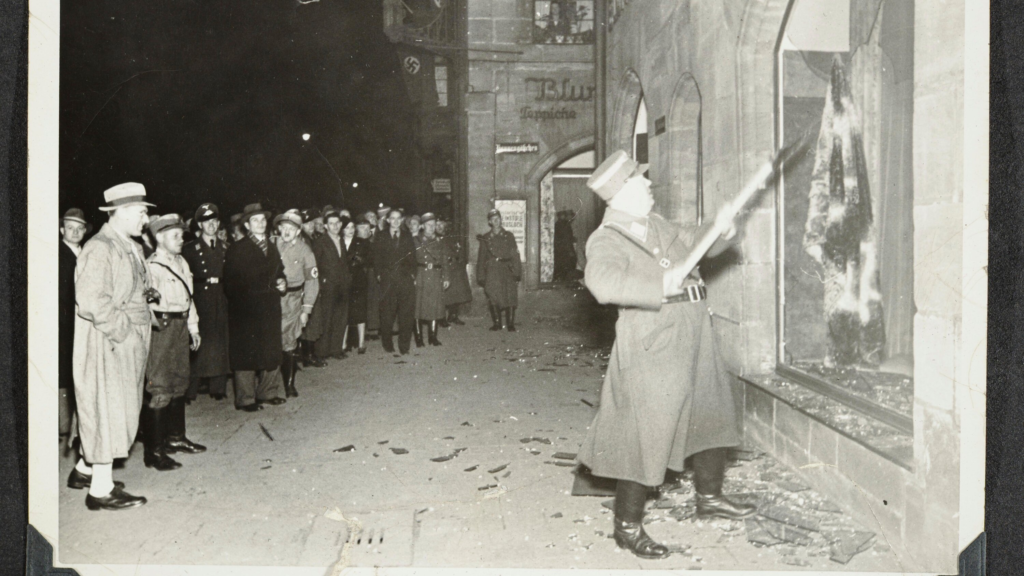
84 Years Later, a Rare Look at the Nazi Attacks of Kristallnacht – The New York Times (nytimes.com)
“I adopted it as my view,” he wrote, “that the Christian doctrine and the way of life it had given to the people was the basic cause of the whole evil, and that it served solely as a means for obtaining the Jew the mastery of the world, which had been granted to him by Jehovah…
YHVH: The Truth About “Yahweh/Jehovah” – Library of Rickandria
For instance, the Diktat of Versailles was signed on June 28, 1919, the fifth anniversary of the assassination of the archducal pair at Sarajevo.
At the time I did not suspect the parallelism of the dates, nor have any idea that cabalistic beliefs had determined them.
Even less did I realize that the murder of the archducal pair had long been planned by the world brotherhood of the Freemasons, in order to unleash in the Jehovah year 1914, the World War which had been decided upon by the Grand-Orient Lodge of France at Paris and furthered by Rome.“
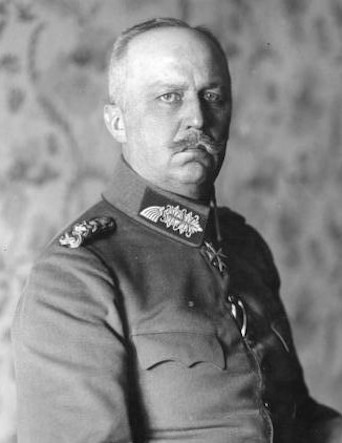
[Erich Friedrich Wilhelm Ludendorff (German pronunciation: [ˈeːrɪç ˈfʁiːdʁɪç ˈvɪlhɛlm ˈluːdn̩ˌdɔʁf]; 9 April 1865 – 20 December 1937) was a German general, politician and military theorist. He achieved fame during World War I for his central role in the German victories at Liège and Tannenberg in 1914. Following his appointment as First Quartermaster General of the Imperial German Army’s Great General Staff in 1916, he became the chief policymaker in a de facto military dictatorship that dominated Germany for the rest of the war. After Germany’s defeat, he contributed significantly to the Nazis’ rise to power. Erich Ludendorff came from a family of the minor nobility in Kruszewnia, located in the Prussian Province of Posen. After completing his education as a cadet, he received his commission as a junior officer in 1885. In 1893, Ludendorff was admitted to the prestigious German War Academy and was recommended by its commandant to the General Staff Corps only a year later. By 1904, he had rapidly risen in rank to become a member of the Army’s Great General Staff, where he oversaw the development of the Schlieffen Plan. Despite being temporarily removed from the Great General Staff for meddling in politics, Ludendorff restored his standing in the army through his success as a commander in World War I. In August 1914, he led the successful German assault on Liège, a feat for which he earned the Pour le Mérite. Upon being transferred to the Eastern Front under the command of General Paul von Hindenburg, Ludendorff was instrumental in inflicting a series of crushing defeats against the Russians, including at Tannenberg and the Masurian Lakes. By August 1916, he had successfully lobbied for Hindenburg’s appointment as Supreme Commander as well as his own promotion to First Quartermaster General. Once he and Hindenburg had established what some authors describe as a de facto military dictatorship, Ludendorff directed Germany’s entire military strategy and war effort until the end of the conflict. In this capacity, he secured Russia’s defeat in the east and launched a new wave of offensives on the Western Front resulting in advances not seen since the war’s outbreak. However, by late 1918, all improvements in Germany’s fortunes were reversed after its forces’ decisive defeat in the Second Battle of the Marne and the Allies’ Hundred Days Offensive. Faced with the war effort’s collapse and a growing popular revolution, Kaiser Wilhelm II forced Ludendorff to resign. After the war Ludendorff became a prominent nationalist leader and a promoter of the stab-in-the-back myth, which posited that Germany’s defeat and the settlement reached at Versailles were the result of a treasonous conspiracy by Marxists, Freemasons and Jews. He also took part in the failed 1920 Kapp Putsch and 1923 Beer Hall Putsch before unsuccessfully standing for election for President against Hindenburg, his wartime superior. Thereafter, he retired from politics and devoted his final years to the study of military theory. His most famous work in this field was The Total War, where he argued that a nation’s entire physical and moral resources should remain forever poised for mobilization because peace was merely an interval in a never-ending chain of wars. Following his death due to liver cancer in Munich in 1937, Ludendorff was given—against his explicit wishes—a state funeral organized and attended by Adolf Hitler.]
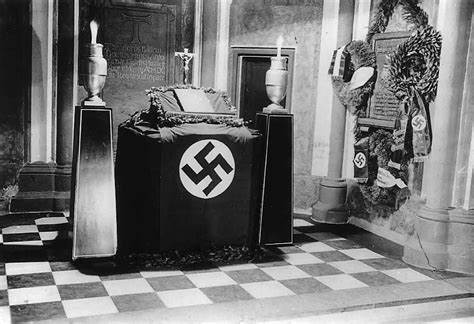
Nazis created an anti-Semitic Bible and Aryan Jesus – Big Think
He was uplifted by these revelations, for they proved what he had always believed in his heart–that Germany had not lost the war in fair battle, but had been defeated by international Jewry, Freemasonry, and the conspiracies of the Church of Rome.
–From the book ‘The Reich Marshal: A Biography of Hermann Goering by Leonard Mosley © 1974
The Jewish Run Media – Library of Rickandria
“If the Catholic Christian is convinced that the Pope is infallible in all religious and ethical matters, so we National Socialists declare with the same ardent conviction that for us too, the Führer is absolutely infallible in all political and other matters.”
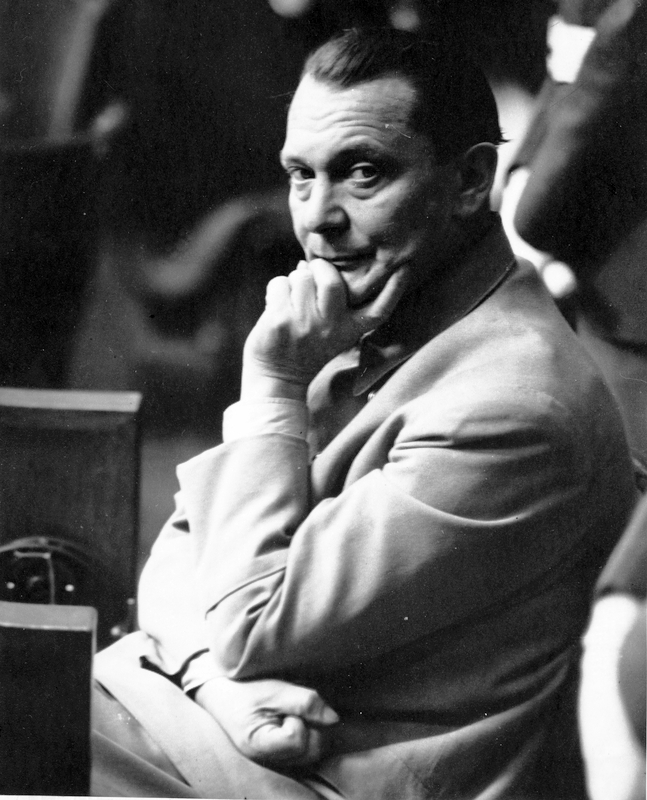
[Hermann Wilhelm Göring (or Goering;[a] German: [ˈhɛʁman ˈvɪlhɛlm ˈɡøːʁɪŋ] ⓘ; 12 January 1893 – 15 October 1946) was a German politician, military leader, and convicted war criminal. He was one of the most powerful figures in the Nazi Party, which ruled Germany from 1933 to 1945. A veteran World War I fighter pilot ace, Göring was a recipient of the Pour le Mérite (“The Blue Max”). He was the last commander of Jagdgeschwader 1 (JG I), the fighter wing once led by Manfred von Richthofen. An early member of the Nazi Party, Göring was among those wounded in Adolf Hitler’s failed Beer Hall Putsch in 1923. While receiving treatment for his injuries, he developed an addiction to morphine which persisted until the last year of his life. After Hitler became Chancellor of Germany in 1933, Göring was named as minister without portfolio in the new government. One of his first acts as a cabinet minister was to oversee the creation of the Gestapo, which he ceded to Heinrich Himmler in 1934. Following the establishment of the Nazi state, Göring amassed power and political capital to become the second most powerful man in Germany. He was appointed commander-in-chief of the Luftwaffe (air force), a position he held until the final days of the regime. Upon being named Plenipotentiary of the Four-Year Plan in 1936, Göring was entrusted with the task of mobilizing all sectors of the economy for war, an assignment which brought numerous government agencies under his control. In September 1939, Hitler gave a speech to the Reichstag designating him as his successor. After the Fall of France in 1940, he was bestowed the specially created rank of Reichsmarschall, which gave him seniority over all officers in Germany’s armed forces. By 1941, Göring was at the peak of his power and influence. As the Second World War progressed, Göring’s standing with Hitler and the German public declined after the Luftwaffe proved incapable of preventing the Allied bombing of Germany’s cities and resupplying surrounded Axis forces in Stalingrad. Around that time, Göring increasingly withdrew from military and political affairs to devote his attention to collecting property and artwork, much of which was stolen from Jewish victims of the Holocaust. Informed on 22 April 1945 that Hitler intended to commit suicide, Göring sent a telegram to Hitler requesting his permission to assume leadership of the Reich. Considering his request an act of treason, Hitler removed Göring from all his positions, expelled him from the party, and ordered his arrest. After the war, Göring was convicted of conspiracy, crimes against peace, war crimes, and crimes against humanity at the Nuremberg trials in 1946. He was sentenced to death by hanging but committed suicide by ingesting cyanide the night before the sentence was to be carried out.]
The Face of the Third Reich: Portraits of the Nazi Leadership by Joachim C. Fest © 1970; Translated from the German by Michael Bullock, Page 114
The following was taken from the book:
“The Third Reich in Power” by Richard J. Evans © 2005
“In his Easter message, written on 19 March 1935, Clemens von Galen, the Bishop of Münster, launched a fierce attack on Rosenberg’s book.
‘There are heathens again in Germany,’
he noted in alarm, and he criticized Rosenberg’s idea of the racial soul.”
Jewish Soul VS. Gentile Soul – Library of Rickandria
“Galen wrote personally to Hitler complaining about attacks on the clergy by leading Nazis such as Baldur von Schirach.
Compromise was clearly not in the air.
Tightening the screws on the Church, Himmler and the Gestapo now began to introduce tougher measures against Catholic lay organizations and institutions, limiting public meetings, censoring the remaining Catholic newspapers and magazines and banning particular issues, and putting proven Nazis into editorial positions in the Catholic press.”
“On 4 November, the [Regional Educational] Minister made matters far worse by banning the religious consecration of new school buildings and ordering the removal of religious symbols such as crucifixes (and, for that matter, portraits of Luther) from all state, municipal, and parish buildings, including schools.”
“Already since even before the Concordat had been ratified, Cardinal Pacelli, the Vatican Secretary of State in Rome, had been sending a steady stream of lengthy and circumstantially detailed complaints to the German government about such violations, listing hundreds of cases in which the brownshirts had closed down Catholic lay organizations, confiscated money and equipment, engaged in anti-Christian propaganda, banned Catholic publications, and much more. Catholic priests were hindered in this struggle, publicly branding the swastika as the ‘Devil’s Cross.’”
Ancient Origins of the Swastika – Library of Rickandria
“The Reich Theatre Chamber began from 1935 onwards to ban Church-sponsored musical and also theatrical events, arguing that they were competing financially and ideologically with Nazi-sponsored concerts and plays. By 1937 it was banning Nativity plays.”
“After the beginning of Goebbel’s campaign against financial corruption in the Church, the tone of exchanges between Berlin and Rome became much sharper.
Relations seemed to be plunging into open hostility.
Church services and sermons in Germany were now, the Vatican complained, being subjected to constant surveillance by the authorities…”
“Matters came to a head when, alarmed at the escalating conflict, a delegation of senior German Bishops and Cardinals, including:
- Bertram
- Faulhaber
- Galen
went to Rome in January 1937 to denounce the Nazis for violating the Concordat.“
“Written in German and entitled Mit brennen Sorge, ‘with burning concern’, it condemned the ‘hatred’ and ‘calumny’ poured on the Church by the Nazis.”
“In order to undermine them, however, the Encyclical went on, the German government, was conducting an ‘annihilatory struggle’ against the Church:
With measures of compulsion both visible and concealed, with intimidation, with threats of economic, professional, civic and other disadvantages, the doctrinal faithfulness of Catholics and in particular of certain classes of Catholic civil servants are being placed under a pressure that is as illegal as it is inhumane.”
“Armed since 1936 with his new powers as Head of the German Police, Himmler now stepped up the campaign against the Church.
Together with his deputy Reinhard Heydrich, he placed secret agents in Church organizations, and escalated police harassment of clerics.
There was a further clamp-down on the diocesan press, restrictions were placed on pilgrimages and processions, even Catholic marriage guidance and parenthood classes were banned because they did not convey the National Socialist view of these things.”
“By 1938 the majority of Catholic youth groups had been closed down on the grounds that they were assisting in the dissemination of ‘writings hostile to the state’.
Catholic Action, whose leaders in Germany allegedly maintained communications with Prelate Kaas, the former leader of the Centre Party, was also banned in 1938.
State subsidies for the Church were cut in Bavaria and Saxony, and monasteries were dissolved with their assets confiscated.
House-searches and arrests of ‘political’ priests underwent a sharp increase, with a steady stream of well-publicized cases of ‘abuse of the pulpit’ brought before the court.“
Reich Propaganda Minister Goebbels also played his part.
Paul Joseph Goebbels on Christianity – Library of Rickandria
After the Encyclical, he intensified the publicity campaign against alleged sex scandals involving Catholic priests that had already begin in the middle of 1935.
Fifteen monks were brought before the courts in November 1935 for offenses against the law on homosexuality in a home for the mentally ill in western Germany.
Atheists & Homosexuality – Library of Rickandria
They received severe prison sentences and the attention of endless column inches in the press.
Other priests were soon being tried for alleged sexual offenses against minors in Catholic children’s homes and similar institutions.
By May 1936 the press was reporting the trial in Koblenz of over 200 Franciscans for similar crimes.”
“Focusing on allegations of pederasty, the press claimed that the monasteries were ‘breeding grounds of a repulsive epidemic’ which had to be stamped out.
By April 1937 over a thousand priests, monks and friars were said to be awaiting trial on such charges.“
“…demanding of the Catholic Church ‘off with the mask’, more than hinting that homosexuality and pedophilia were epidemic in the Church as a whole, and not nearly in isolated instances.”
“Particularly offensive, declared the press, was the fact that the Church stood behind the accused and treated them as martyrs.
As more trials followed, the Propaganda Ministry built up a steady campaign to portray the Church as sexually corrupt and unworthy of being entrusted with the education of the young.”
“…such things only went on in the Church, where, it was suggested, they were an inevitable by-product of the celibacy that was required of the priesthood by the Church.
“The Catholic Church was a ‘sore on the healthy racial body’ that had to be removed, declared one article in the Nazi press.
The campaign culminated in a furious speech by the Reich Propaganda Minister himself, delivered to an audience of 20,000 of the Party faithful, and broadcast on national radio, on 28 May 1937, denouncing Catholic ‘corruptors and poisoners of the peoples’ soul’ and promising that ‘this sexual plague must be exterminated root and branch’.
‘It is not the law of the Vatican that rules here among us’ he warned the Church, ‘but the law of the German people.’”
“…the Nazis now launched a sustained campaign to close denominational schools and replace them with non-religious ‘community schools’, backed by votes from parents.”
“Already beginning in 1936, Cardinal Bertram had complained directly to Hitler of the ‘unheard-of terror’ which was being practiced in Bavaria, Württemberg, and elsewhere.
His appeal fell on deaf ears.
The campaign continued. ‘We don’t want to let the chaplain teach us anymore!’ Children were reported as saying by the leading Nazi daily paper on 25 May 1937 under the headline ‘Entire school class defends itself against sex offender in priests clothing’.”
“By the summer of 1939, all denominational schools in Germany had been turned into community schools, and all private schools run by the Churches had been closed down, and the monks and priests who staffed them dismissed.
Pastors and priests were prevented from teaching in primary schools in increasing numbers.
At the same time, religious instruction classes were reduced in number.“
“In similar vein, the Education Ministry drew up plans to merge or close down many of the theological faculties in the universities, while from 1939 theology posts in teacher training colleges that fell vacant were no longer filled, by order of the Education Ministry in Berlin.
In a few areas, notably in Württemberg, where the Educational Minister Mergenthaler was strongly anti-Christian, there were attempts to abolish religious instruction and replace it with classes on the Nazi worldview.
The regime did not succeed in abolishing religious education altogether by 1939, but its long-term intentions had become abundantly clear by this date.
The power of the Catholic Church in Germany, like that of its Protestant counterpart, had been severely dented by 1939. It had been intimidated and harassed until it began to scale down its criticisms of the regime for fear that even worse might follow.
Widespread threats of imprisonment, reported a local government official towards the end of 1937, had produced a ‘cautious restraint on the part of the clergy’.
In some areas, the Gestapo took over the anti-Church campaign and rapidly succeeded in driving the Catholic Church out of public life.”
“From Rome, Cardinal Pacelli continued to send interminable letters of complaint to the German government charging it with continued violations of the Concordat.
Yet, although he contemplated doing so in September 1937, Hitler in the end refrained from openly repudiating the Concordat.
It was not worth the risk of arousing the hostility of the Vatican and the protests of Catholic states, particularly Austria, in the increasingly delicate state of international relations in the late 1930s.
Privately, however, the Foreign Ministry made no bones about the fact that it regarded the Concordat as ‘out of date’ because of its provisions, particularly concerning education, were ‘fundamentally opposed to the basic principles of National Socialism’.
It was easier to proceed piecemeal and by stealth and avoid all mention of the Concordat.
In public, Hitler continued to call for the Church’s loyalty and to point out that it still received substantial state support.
In the long run, however, he made it clear in private that it would be completely separated from the state, deprived of income from state taxes, and become a purely voluntary body, along with its Protestant equivalent.
As Rosenberg declared in 1938, since young people were now under the control of the Hitler Youth and the Nazified educational system, the hold of the Church over its congregation would be broken and the Catholic and Confessing Churches would disappear from the life of the people in their present form.
It was a sentiment from which Hitler himself did not dissent.”
“Baldur von Schirach urging young people in 1934 to leave Catholic youth organizations and join the Hitler Youth, declared that Rosenberg’s path is the path of the German youth’.
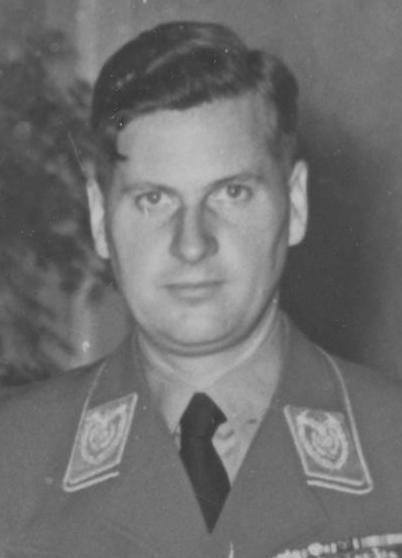
[Baldur Benedikt von Schirach (9 May 1907 – 8 August 1974) was a German politician who served as head of the Hitler Youth from 1931 to 1940. From 1940 to 1945, he was the Gauleiter (district leader) and Reichsstatthalter (Reich governor) of Vienna. A member of the Nazi Party from the age of 18, Schirach was named national youth leader of the party in 1931. In 1932, he was elected as a deputy to the Reichstag. After Adolf Hitler became Chancellor of Germany in 1933, he was appointed Jugendführer (Youth Leader) of the German Reich, responsible for all youth organizations in the nation. In 1940, Schirach saw action as an infantryman in the French Campaign, for which he was awarded the Iron Cross, 2nd Class. In 1940, Schirach was appointed Gauleiter of the Reichsgau Vienna; Artur Axmann succeeded him as leader of the Hitler Youth. A virulent antisemite, he was responsible for deporting 65,000 Viennese Jews to various Nazi concentration camps in German-occupied Poland. In April 1945, facing Red Army advance, Schirach fled from Vienna to Tyrol, where he later surrendered to American forces. At the Nuremberg trials, he was convicted of crimes against humanity and sentenced to 20 years in prison. After completing his sentence at Spandau in 1966, Schirach retired to Southern Germany. He died in 1974 at the age of 67.]
In July 1935, at the height of the controversy over Rosenberg’s attacks on the Churches, a speaker told a meeting of the Nazi Students’ League in Bernau:
‘One is either a Nazi or a committed Christian.’
Christianity, he said, ‘promotes the dissolution of racial ties and of the national racial community…
We must repudiate the Old and New Testaments, since for us the Nazi idea alone is decisive.
Exposing the Old Testament – Library of Rickandria
Exposing the New Testament – Library of Rickandria
For us there is only one example, Adolf Hitler and no one else.”
Adolf Hitler: Outsider & Occultist – Library of Rickandria
“Such anti-Christian ideas were widespread in the Hitler Youth and formed an increasingly important part of the Party’s program for the indoctrination of the young.
Children receiving lunches from the National Socialist welfare organization in Cologne, for example, were obliged to recite a grace before and after the meal which substituted the Führer’s name for God’s when thanks were given.
At one training camp for schoolchildren in Freusberg, they were told that the Pope was a half-Jew, and that they had to hate the ‘Jewish, racially alien teaching of Christianity’, which was incompatible with National Socialism.
Jewish Soul VS. Gentile Soul – Library of Rickandria
The mother of a twelve-year-old Hitler Youth found the following text in his pocket when he came home one evening; the song was also sung in public by the Hitler Youth at the 1934 Nuremberg Party Rally:
We are the jolly Hitler Youth,
We don’t need any Christian ‘truth’
For our Leader Adolf Hitler, our Leader
Always our interceder.
Whatever the Papist priests may try,
We’re Hitler’s children until we die;
We follow not Christ, but Horst Wessel.
Away with incense and holy water vessel!
As sons of our forebears from times gone by
We march as we sing with banners held high.
I’m not a Christian, nor a Catholic,
I go with the SA through thin and thick.
Not the cross they sang, but ‘the swastika is redemption on earth.’”
Ancient Origins of the Swastika – Library of Rickandria
“[Such propaganda] also propagated a fiercely anti-Christian ethic whose virulence and potency should not be underestimated.
Watching a young Hitler Youth member enter a Munich classroom in August 1936, Friedrich Reck-Malleczewen observed how his glance fell on the crucifix hanging behind the teacher’s desk, how in an instant his young and still soft face contorted in fury, how he ripped this symbol, to which the cathedrals of Germany, and the ringing progressions of the St. Matthew are consecrated, off the wall and threw it out of the window into the street…
With the cry:
‘Lie there, you dirty Jew!”
Exposing the Jews – Library of Rickandria
“And there were other outspokenly anti-Christian figures within the Nazi leadership besides Schirach.
Open paganism in the Party, championed by Erich Ludendorff in the mid-1920s, did not disappear with Ludendorff’s foundation of the Tannenberg League in 1925 and his expulsion from the Party two years later.
Robert Ley, leader of the Labor Front, went even further than Rosenberg in his disdain for Christianity and his rejection of the Divinity of Christ, though he did not follow him down the road of creating a substitute religion.
A more consistently paganist figure in the Nazi elite was the Party’s agricultural expert Richard Walther Darré, whose ideology of ‘blood and soil’ made such a powerful impression on Heinrich Himmler.
Darré believed that the medieval Teutons had been weakened by their conversion to Christianity, which he claimed had been foisted on them by the effete Latins from Southern Europe.”
“As an SS plan put it in 1937: ‘We live in the age of the final confrontation with Christianity.
It is part of the mission of the SS to give the German people over the next fifty years the non-Christian ideological foundations for a way of life appropriate to their own character’.
“The families of SS men were ordered by Himmler not to celebrate Christmas, but to mark Midsummer instead.
Christianity, Himmler was to declare on 9 June 1942, was ‘the greatest of plagues’.
“The Interior Ministry ruled that people leaving the Church could declare themselves to be ‘Deists’ (gottgläubig), and the Party decreed that officeholders could not simultaneously hold any office in the Catholic or Protestant Church.”
“This process was accelerated by an escalating series of measures pushed by the energetic and strongly anti-Christian head of Rudolf Hess’s office, Martin Bormann, banning priests and pastors from playing a part in Party affairs, or even, after May 1939, from belonging to it altogether.“
“It remained the case that the Nazi Party was on the way to severing all its ties with organized Christianity by the end of the 1930s.”
“Among Catholic workers in the Ruhr, by contrast, there were reports of worries that Hitler’s success would lead to an even more ruthless campaign against the Church.”
From the book:
“The Spear of Destiny” by Trevor Ravenscroft © 1973
Satanism: Far East Origins – Library of Rickandria
“Unlike Roman Catholic Priests (“Malevolent Parasites’) and Puritan Pastors (“submissive as dogs who sweat in embarrassment when you talk to them”), Hitler refused to accept the story of the ancient Hebrews as in any way of positive significance in the long history of mankind.”
“There was no need as far as he was concerned to assess the value of Christianity because Nietzsche had already done it to a perfection in a masterful analysis of this religion “for slaves, weaklings and the desiccated residue of racial scum!”
“Hielscher was also responsible for creating the ‘Ritual of the Stifling Air’ in which select members of the SS took oaths of irreversible allegiance to Satanic powers.
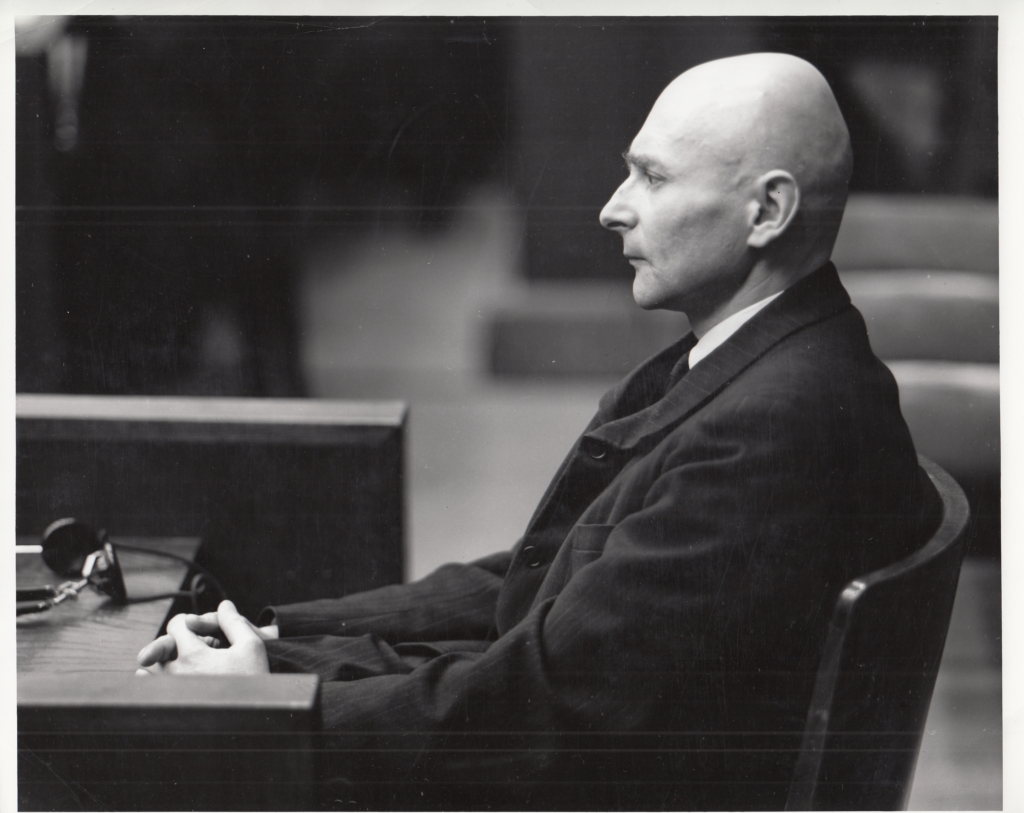
Had the Nazis won the war, Hielscher may well have become High Priest of a new world religion that would have replaced the Cross with the Swastika.”
“Hitler hated Christ and felt only scorn and contempt for all Christian aims and ideals.”
The Truth About “Jesus Christ” – Library of Rickandria
[Dietrich-Eckart]
“Yet those who saw him apparently immersed in the gay social round of the Munich Bierkellers never guessed that behind that jovial façade of this veteran Army Officer was hidden a dedicated Satanist, the supreme adept of the arts and rituals of Black Magic and the central figure in a powerful and widespread circle of occultists – the Thule Group.”
BLACK MAGICK – Library of Rickandria
[After the war when captured by the ‘allies’]
“In full view of the guards of the condemned cells, who were watchful mainly for the passing of poisons through which their charges might evade the gallows, Wolfram von Sievers knelt in reverence whilst Hielscher incanted the words of a Black Mass, a final hymn to worship to the powers of evil awaiting his soul on the other side of the grave.”

“Eckart was on the lookout for quite another sort of pupil.
He claimed to his fellow adepts in the Thule Group that he had personally received a kind of Satanic annunciation that he was destined to prepare the vessel of the Anti-Christ, the man inspired by Lucifer to conquer the world and lead the Aryan race to glory.”
As Dietrich Eckart lay dying in 1923, he said:
‘Follow Hitler!
He will dance, but it is I who have called the tune.
I have initiated him into the ‘Secret Doctrine’, opened his centers in vision and given him the means to communicate with the Powers.
Do not mourn for me:
I shall have influenced history more than any other German.’
